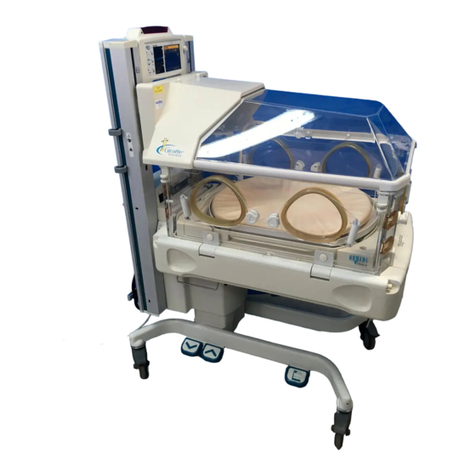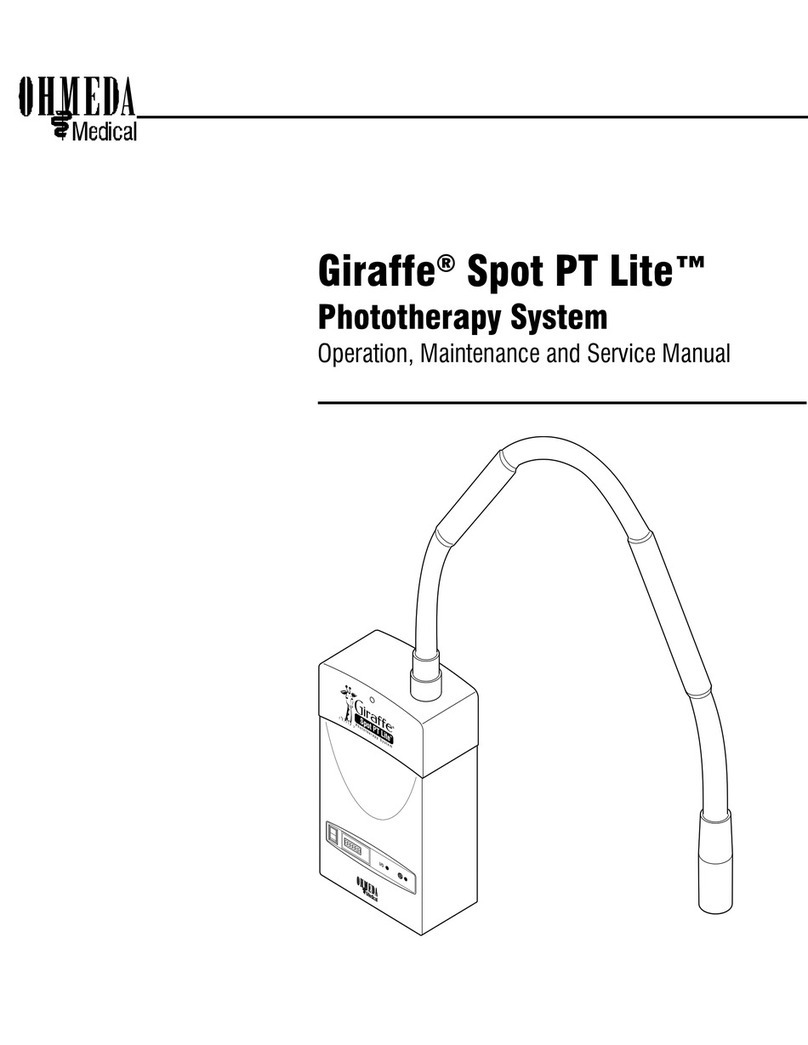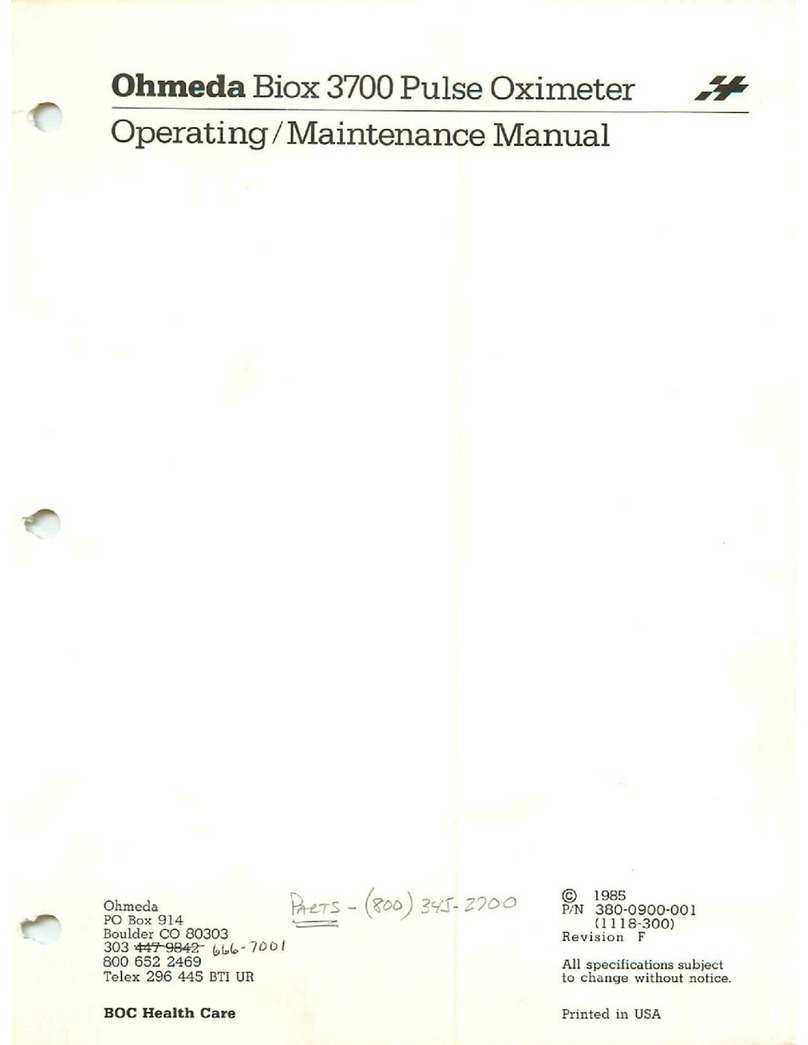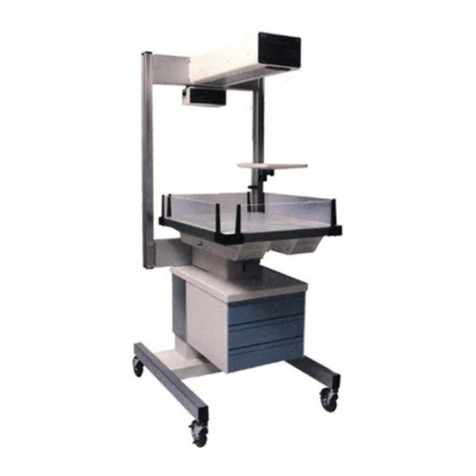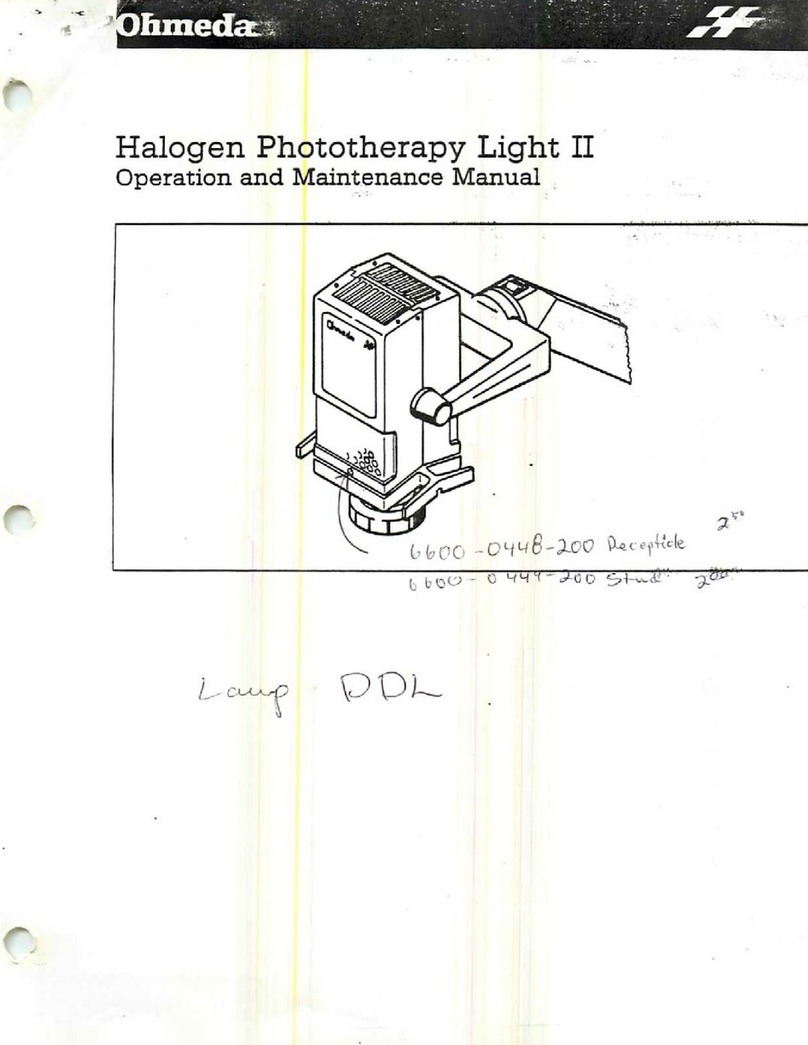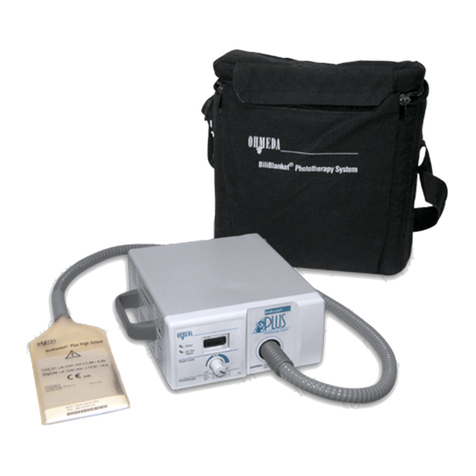
11/09/93
xi
50/pkg)
6600-0194-000
photo-
therapy lamp usage, etc.) or the patient condition requiring heater
adjustments in response to these changes. In the servo mode, the infant
warmer automatically adjusts heater output to maintain the desired skin
temperature, reducing (but not eliminating) the need to monitor the
patient and make adjustments to the equipment.
Use of electrosurgical units or other electrical field radiating equipment
can affect the operation of the warmer. Keep the patient probe lead as far
away as possible from electrosurgical cables. Do not allow excess electri-
cal cables to be laid on the bed platform. Use of electrosurgical units or
other instruments which radiate electrical fields can cause indirect
heating, by several tenths of a degree of the skin temperature probe due
to absorbed electrical energy. When using these devices near the radiant
warmer, operate the Infant Warmer in manual mode for maximum safety.
The use of phototherapy equipment may raise the patient’s temperature.
Radiant warmers increase an infant’s insensible water loss. Take appro-
priate measures to maintain the patient’s fluid balance while caring for
them in a radiant warmer.
Use only the Reusable Ohmeda skin temperature probe (Stock No. 0208-
0697-700) and heat reflective patches (Stock No. 0203-1980-300,
responsibihty
for detecting changes in the environment (drafts, direct sunlight,
Precautions
Do not install chest drainage tubes in the Tubing Organizer Rear Side
Panel.
Install tubing in the appropriately sized holes. Use of inappropriate holes
may cause kinking, pinching or restriction of flow through the tubes, and
may interfere with the proper operation of therapy equipment.
Do not lower the Tubing Organizer Rear Side Panel with tubing attached.
Lowering can pull on the tubing, causing the tubes to dislodge from the
patient.
Do not move the warmer by pushing or pulling on the bed side panels.
This action may lead to the deterioration and breakage of the compo-
nents which form a safety barrier around the infant.
Ensure that the bedside panels are locked in position when a patient
occupies the bed. Blankets or other foreign objects may prevent the
latches from fully engaging.
Do not leave the patient unattended when the side panels are lowered.
Never place an infant on the X-ray cassette tray.
Do not place any foreign objects on the warmer bed or in the under bed
cavity while performing X-ray procedures. Incompatible materials in the
path of the X-ray may adversely affect the quality of the X-ray image. Use
of mattress or bedding materials other than those supplied by Ohmeda
should be evaluated by a Neonatologist or Radiologist.
Do not leave the patient unattended when using the warmer. Check the
patient’s temperature regularly to ensure the comfort and the safety of
the patient. If the warmer is used for an extended time, it is recom-
mended that the servo mode of operation be used. When an alarm is
silenced, close monitoring of the patient’s condition is required.
Use the servo mode unless the manual mode is specifically prescribed.
While both modes require patient monitoring, the manual mode requires
constant attention. In the manual mode, you must take the







